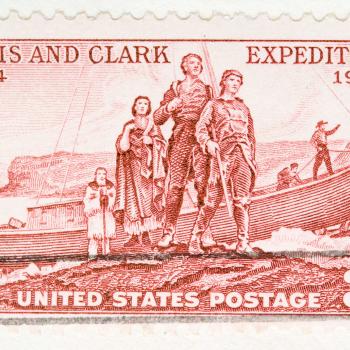The Lewis and Clark Expedition reached the Pacific Ocean in 1805.

Event Description
In 1804, at the request of Thomas Jefferson, Meriwether Lewis and William Clark set out from St. Louis with their 33-member team to explore the American West. By mid-November of 1805, guided and aided much of the way by a young Shoshone woman named Sacagawea, they arrived at the Pacific Ocean. Their accounts, describing the American Indians they met, the wildlife they saw, and the physical environment they withstood, paved the way for the great western expansion.
Classroom Activity
Think for a moment about how descriptive Lewis and Clark needed to be in their writings for an audience back East who had never seen, or imagined, what they were seeing. This is a wonderful opportunity to practice descriptive writing with your students.
Depending upon your school's technology, you can have students look at Kenneth Holder's paintings of various scenes from the Lewis and Clark trail, available here. If this is not possible, print out landscape scenes-or slides from your own vacation-that are vivid in their details. Then, ask students to write words and phrases that describe what they see, what they imagine they might hear, etc. Remind them that they are writing for an audience that has never seen these pictures before. Ask students to transform their notes into a descriptive paragraph as if they were a member of the Lewis and Clark expedition. Last, ask students to return to a piece that they have already written this year and revise it by adding more sensory words and phrases.
Websites
This portion of the PBS website dedicated to the Lewis and Clark expedition is an interactive story where portions of the journey are recounted and students are expected to make a choice about what Lewis and Clark should do next.
This is a short, easy-to-read article on York, William Clark's slave, who played a vital, but underappreciated, role on the expedition.
This National Geographic site tries to uncover some of the mystery surrounding this teenage Shoshone woman who acted as an interpreter and guide for the expedition.
This site, dedicated to Lewis and Clark, includes an interactive journey log, timeline, games, and information about supplies used and discoveries made by the Corps of Discovery.